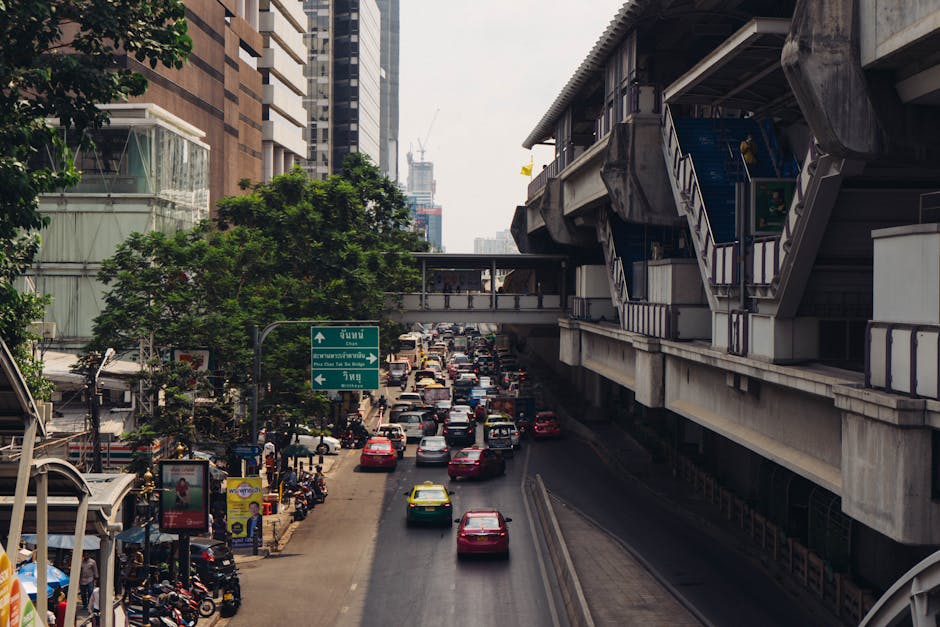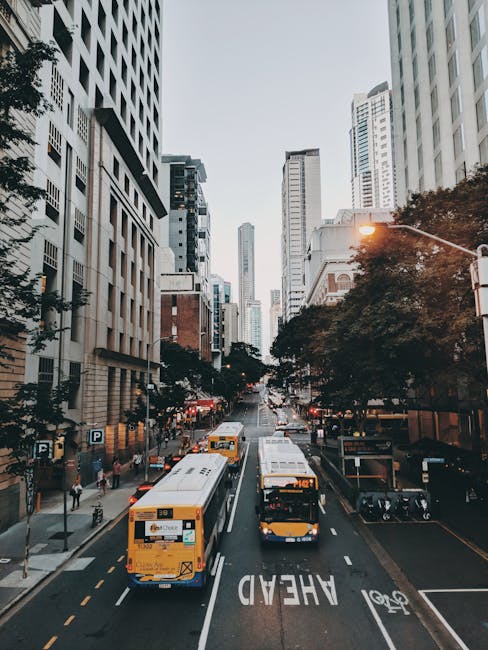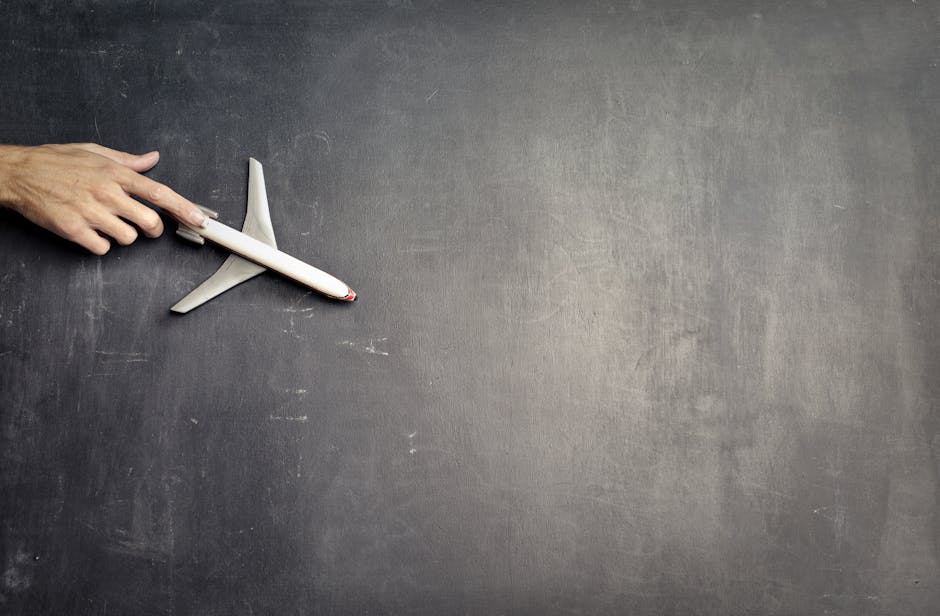Bangkok Transport: Your BTS, MRT, and Taxi Adventure Guide!

Bangkok Transport: Your BTS, MRT, and Taxi Adventure Guide!
Hey there, fellow traveler! Planning a trip to Bangkok? Get ready for an incredible adventure filled with delicious street food, stunning temples, and vibrant culture! But let's be honest, navigating a new city's transport system can be a bit daunting. I remember my first time – I felt completely overwhelmed! That's why I'm here to share my personal experiences and insights on mastering Bangkok's public transport, specifically the BTS Skytrain, MRT Subway, and taxis. Think of me as your friendly guide, helping you conquer the city like a pro!
Understanding Bangkok's Public Transport Landscape

Before diving into the specifics, let's paint a quick picture of the transport options available in Bangkok. You've got your:
- BTS Skytrain: Elevated trains that whiz above the city streets.
- MRT Subway: Underground trains, a great option for avoiding traffic.
- Taxis: Readily available, but traffic can be a major factor.
- Buses: An extensive network, but can be confusing for tourists.
- Tuk-Tuks: A fun, albeit sometimes overpriced, experience.
- Motorbike Taxis: For the daring! Quick but can be risky.
- River Boats: A scenic way to travel along the Chao Phraya River.
For this guide, we'll focus on the BTS, MRT, and taxis, as they're generally the most convenient and tourist-friendly options. I've used all three extensively and have learned a few tricks along the way. Trust me, you'll be navigating like a local in no time!
Riding the BTS Skytrain: Soaring Above the Traffic

The BTS Skytrain, affectionately known as the "Rot Fai Fah" (literally "sky train" in Thai), is my go-to choice for getting around Bangkok quickly and efficiently. It's clean, air-conditioned, and offers fantastic views of the city. Imagine gliding above the chaotic traffic below – pure bliss!
Key Things to Know:
- Routes: The BTS has two main lines: the Sukhumvit Line (light green) and the Silom Line (dark green). They intersect at Siam Station, a major interchange.
- Ticketing: You have a few options:
- Single Journey Ticket: Purchase at the ticket vending machines, but requires knowing your destination station and exact fare.
- Rabbit Card: A rechargeable card that's the most convenient option if you plan to use the BTS frequently. You can top it up at ticket offices. There are different types of Rabbit Cards, including ones for students and seniors, so check which one best suits your needs.
- Day Pass: If you're planning a lot of BTS travel in one day, a day pass offers unlimited rides.
- Navigating the Stations: The stations are well-marked in English and Thai. Listen for announcements, which are also in both languages. Look for maps near the ticket machines and at the platforms.
- Crowd Control: The BTS can get very crowded, especially during rush hour (typically 7-9 AM and 4-7 PM). Be prepared to squeeze in!
- Etiquette: Be mindful of others, especially during peak hours. Let people exit the train before you try to board, and avoid blocking doorways.
My BTS Tips:
I always recommend getting a Rabbit Card if you're staying in Bangkok for more than a few days. It saves so much time and hassle! Also, try to avoid traveling during rush hour if you can. If you must travel then, be prepared for crowds and consider using the MRT instead, as it's sometimes less packed.
Another trick I learned is to download a BTS map to your phone. That way, you can easily plan your route even when you don't have internet access. Many apps are available for both iOS and Android that offer offline BTS and MRT maps.
Exploring Underground with the MRT Subway

The MRT Subway is another fantastic way to beat the Bangkok traffic. It's clean, efficient, and connects to several key areas of the city. While it doesn't cover as much ground as the BTS, it's a valuable tool in your transport arsenal.
Key Things to Know:
- Routes: The MRT has two lines: the Blue Line and the Purple Line. The Blue Line is the most useful for tourists, as it connects to popular areas like Hua Lamphong Railway Station and Chatuchak Weekend Market.
- Ticketing: Similar to the BTS, you can purchase single journey tickets or use a stored value card called the MRT Card (also known as Mangmoom Card). The Mangmoom Card is also compatible with some bus lines.
- Security: Be aware that the MRT has security checks before you enter the platform. You may be asked to open your bag for inspection. This is a standard safety measure.
- Connecting with the BTS: The MRT and BTS connect at several stations, making it easy to transfer between the two systems. Look for signs indicating the transfer points.
My MRT Tips:
I find the MRT particularly useful for getting to Chatuchak Weekend Market. The MRT station (Chatuchak Park) is right next to the market, making it a breeze to get there. Also, consider using the MRT if you're traveling during the BTS rush hour, as it can be less crowded. The MRT also has excellent air conditioning, which is a huge plus on a hot Bangkok day!
One little tip I learned the hard way: remember to keep your MRT ticket safe until you exit the station. You need it to pass through the exit gates. Losing your ticket means you'll have to pay a penalty.
Taxis in Bangkok: A Love-Hate Relationship

Ah, taxis in Bangkok! They're ubiquitous, readily available, and sometimes the only option, especially late at night or when you're carrying a lot of luggage. However, they can also be a source of frustration if you're not careful. I've had my fair share of both good and bad taxi experiences in Bangkok, so let me share some wisdom.
Key Things to Know:
- Metered Taxis: Always insist on using the meter ("meter dai mai krap/ka?" – "Can you use the meter?"). Some drivers will try to negotiate a fixed price, which is usually higher than the metered fare. If they refuse to use the meter, simply find another taxi.
- Traffic: Bangkok's traffic is notorious. Factor in extra travel time, especially during rush hour. Sometimes, taking the BTS or MRT is a faster option, even with transfers.
- Communication: Many taxi drivers don't speak English very well. It's helpful to have your destination written down in Thai or to show them a map on your phone. Using a ride-hailing app like Grab (similar to Uber) can also help overcome the language barrier.
- Grab: Grab is a popular ride-hailing app in Southeast Asia and is widely used in Bangkok. It allows you to book a taxi or private car, see the fare upfront, and pay with cash or card. It's a convenient and reliable option, especially if you don't speak Thai.
- Location Awareness: It helps to have some idea of the general direction of your destination. Some drivers might take a longer route to inflate the fare. Knowing the general area helps you spot any detours.
My Taxi Tips:
I always prefer to use Grab whenever possible. It eliminates the need to haggle over the fare and ensures a more transparent transaction. However, sometimes Grab can be more expensive than a metered taxi, especially during peak hours. In those cases, I flag down a taxi and insist on using the meter.
Another tip: have small bills ready. Taxi drivers often claim they don't have change, even if you give them a relatively small bill. It's a common tactic to get you to round up the fare. I try to keep a stash of 20 and 50 baht bills handy.
Finally, be aware of scams. Some drivers might try to take you to a gem store or tailor shop, claiming it's a shortcut or a great deal. Politely decline and insist on going directly to your destination.
Putting It All Together: Planning Your Bangkok Transport Strategy

So, how do you combine the BTS, MRT, and taxis to create the ultimate Bangkok transport strategy? Here's my approach:
- Plan Ahead: Before you head out, check the BTS and MRT maps to see if they can get you close to your destination. Apps like Google Maps are also helpful for planning routes using public transport.
- Consider the Time of Day: Factor in traffic when deciding whether to take a taxi. During rush hour, the BTS or MRT are almost always faster.
- Use a Combination: Sometimes, the best option is to combine modes of transport. For example, you might take the BTS to a station near your destination and then hop in a taxi for the final leg of the journey.
- Download Useful Apps: Download the BTS SkyTrain, MRT, and Grab apps to your phone. They'll be invaluable resources for navigating the city.
- Be Patient: Bangkok can be a chaotic city, and things don't always go according to plan. Be patient, flexible, and don't be afraid to ask for help. Most Thais are friendly and willing to assist tourists.
Beyond the BTS, MRT, and Taxis

While we've focused on these three modes of transport, don't forget about the other options available in Bangkok. Tuk-tuks are a fun, albeit touristy, experience. River boats are a scenic way to travel along the Chao Phraya River. And motorbike taxis are a quick, though potentially risky, option for navigating traffic.
However, for most tourists, the BTS, MRT, and taxis will be the most convenient and reliable options. Mastering these three modes of transport will give you the freedom to explore Bangkok at your own pace and discover all the amazing things this city has to offer.
Final Thoughts: Embrace the Adventure!

Navigating Bangkok's public transport system might seem daunting at first, but with a little planning and preparation, you'll be a pro in no time. Embrace the adventure, be open to new experiences, and don't be afraid to get a little lost. After all, that's often where the best discoveries are made. So, get out there, explore, and enjoy the incredible city of Bangkok! And remember, if you ever feel lost or confused, just ask for help. The people of Thailand are known for their kindness and hospitality. Happy travels!
Post a Comment